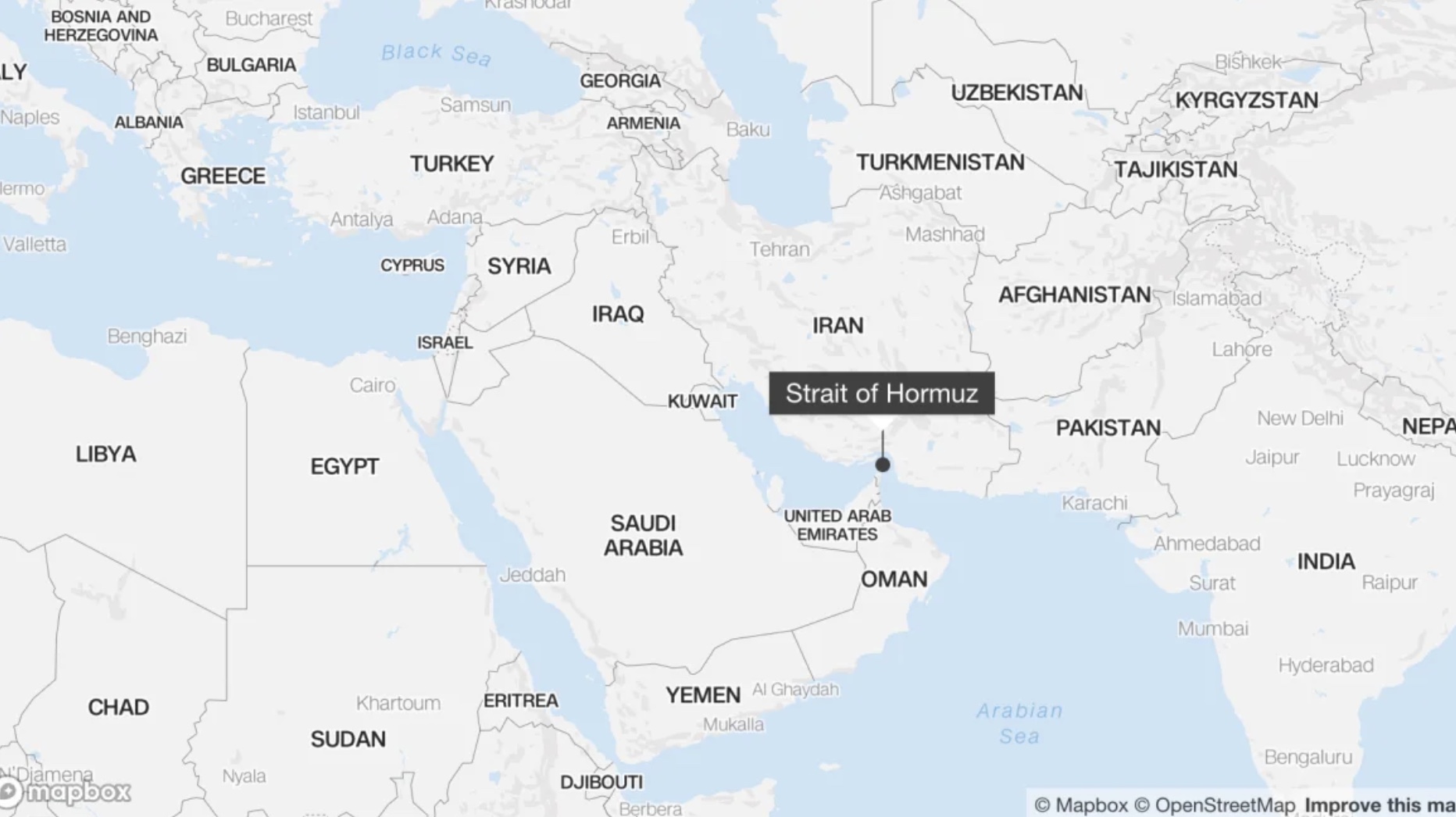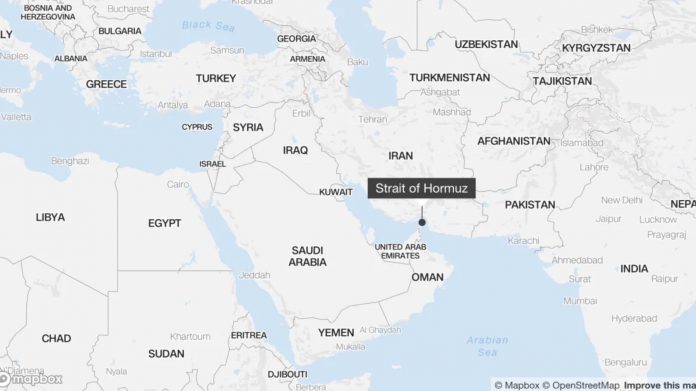ช่องแคบที่มีความกว้างเพียง 21 ไมล์ (34 กิโลเมตร) ถูกระบุว่าเป็น “เส้นทางขนส่งน้ำมันที่สำคัญที่สุดของโลก” ตามรายงานของสำนักงานสารสนเทศด้านพลังงานแห่งสหรัฐอเมริกา (EIA)
ประมาณหนึ่งในห้าของการค้าขายน้ำมันทั่วโลกต่อวันต้องผ่านช่องแคบแห่งนี้ ซิโมน ตากเลียเปียตรา นักวิจัยอาวุโสจากสถาบัน Bruegel ที่กรุงบรัสเซลส์ระบุ และยังรวมถึงประมาณหนึ่งในสี่ของการค้าก๊าซธรรมชาติเหลวทั่วโลกต่อวันอีกด้วย
เมื่อความขัดแย้งในตะวันออกกลางทวีความรุนแรง ความเสี่ยงต่อการหยุดชะงักของการขนส่งน้ำมันผ่านช่องแคบฮอร์มุซจึงเพิ่มสูงขึ้น หรืออาจถึงขั้นหยุดชะงักทั้งหมด
สัปดาห์ที่ผ่านมา อิหร่านยิงจรวดหลายลูกเข้าโจมตีอิสราเอลเพื่อตอบโต้การสังหารฮัสซัน นัสรัลเลาะห์ ผู้นำกลุ่มฮิซบอลเลาะห์ซึ่งได้รับการสนับสนุนจากอิหร่าน โดยเหตุการณ์ดังกล่าวทำให้อิสราเอลเตรียมพร้อมที่จะตอบโต้กลับต่ออิหร่าน รัฐมนตรีว่าการกระทรวงกลาโหมอิสราเอล โยอาฟ กัลแลนต์ กล่าวกับ CNN เมื่อวันอาทิตย์ว่า “ทุกอย่างยังคงอยู่ในโต๊ะเจรจา”
ตากเลียเปียตราอธิบายถึงสถานการณ์ที่รุนแรงว่า “ร้ายแรงมาก” และเสริมว่าหากความตึงเครียดที่เกี่ยวข้องกับช่องแคบฮอร์มุซเพิ่มขึ้น อาจส่งผลให้เกิดเหตุการณ์คล้ายน้ำมันช็อคในทศวรรษ 1970 ซึ่งราคาน้ำมันพุ่งสูงขึ้นอย่างมาก
ในปี 1973 ราคาน้ำมันพุ่งสูงขึ้นเมื่อกลุ่มประเทศผู้ผลิตน้ำมันรายใหญ่ในตะวันออกกลางหยุดการส่งออกน้ำมันไปยังสหรัฐฯ และประเทศอื่น ๆ เพื่อตอบโต้การสนับสนุนอิสราเอลในสงครามอาหรับ-อิสราเอล ส่งผลให้เกิดภาวะขาดแคลนน้ำมันในสหรัฐฯ และผู้คนต้องต่อคิวยาวที่ปั๊มน้ำมัน
ในปีนี้ ตั้งแต่อิสราเอลเริ่มโจมตีกลุ่มฮิซบอลเลาะห์ในช่วงปลายเดือนกันยายน ราคาน้ำมันได้ปรับตัวสูงขึ้น แต่ไม่มากนัก เนื่องจากนักลงทุนกังวลเกี่ยวกับความต้องการน้ำมันที่อ่อนแอในประเทศจีนและภาวะน้ำมันล้นตลาดทั่วโลก
ราคาน้ำมันดิบเบรนต์ซึ่งเป็นเกณฑ์มาตรฐานของโลก ปรับตัวเพิ่มขึ้นเพียงเล็กน้อยกว่า 5% อยู่ที่ 77 ดอลลาร์ต่อบาร์เรลตั้งแต่วันที่ 17 กันยายน ขณะที่ราคาน้ำมันดิบเวสต์เท็กซัสอินเตอร์มีเดียต (WTI) ของสหรัฐฯ ขยับขึ้น 3.6% เป็นเกือบ 74 ดอลลาร์ต่อบาร์เรลในช่วงเวลาเดียวกัน
แต่หากการค้าขายน้ำมันผ่านช่องแคบฮอร์มุซสะดุด ราคาน้ำมันอาจพุ่งทะลุ 100 ดอลลาร์ต่อบาร์เรล ตามข้อมูลจากบริษัทวิจัย ClearView Energy Partners ซึ่งอาจทำให้ราคาน้ำมันเบนซินพุ่งสูงขึ้นตามไปด้วย
ริชาร์ด บรอนซ์ ผู้ร่วมก่อตั้งและนักวิเคราะห์จากบริษัท Energy Aspects กล่าวในบันทึกเมื่อวันจันทร์ว่า “เรามองว่าความเสี่ยงที่อิหร่านจะขัดขวางช่องแคบฮอร์มุซยังคงอยู่ในระดับต่ำ แต่การตัดสินใจของอิหร่านเริ่มทำนายได้ยากขึ้น”
“หากอิสราเอลตอบโต้แรงพอในครั้งนี้ เช่น การโจมตีเข้มข้นที่เป้าหมายทางนิวเคลียร์ของอิหร่าน เราไม่สามารถตัดความเป็นไปได้ที่อิหร่านจะพยายามปิดช่องแคบได้” เขากล่าวเสริม
A 21-mile-wide channel is key to cheap gas. It’s under threat

Global oil prices have spiked in recent days as the conflict in the Middle East has reached fever pitch. They could rise yet further if Israel’s widening war embroils the vital Strait of Hormuz off Iran’s southern coast.
The slim waterway — just 21 miles (34 kilometers) wide at its narrowest point — is “the world’s most important oil transit chokepoint,” according to the US Energy Information Administration.
About one-fifth of the world’s global oil trade passes through the strait every day, notes Simone Tagliapietra, a senior fellow at Brussels-based think tank Bruegel. It also accounts for about a quarter of the world’s daily trade in liquefied natural gas.
As the conflict in the Middle East escalates, so does the risk of disruption to the flow of oil through the strait — or even a complete stoppage.
Last week, Iran launched a barrage of missiles at Israel in retaliation for Israel’s killing of Hassan Nasrallah, the leader of Hezbollah, an Iran-backed militant group based in Lebanon, as well as others. Israel’s Defense Minister Yoav Gallant told CNN Sunday that the country was preparing to strike back at Iran and that “everything is on the table.”
Tagliapietra described the febrile situation as “very serious,” adding that any rise in tensions involving the Strait of Hormuz might have consequences resembling the oil shock of the 1970s, when the price of oil went “through the roof.”
In 1973, oil prices soared as key Arab oil producers stopped exporting the commodity to the United States and other nations in response to their support of Israel in that year’s Arab-Israeli war. The embargo led to fuel shortages in the US and long lines at gas stations.
This year, since Israel began targeting Hezbollah in late September, oil prices have climbed but not dramatically so, as investors worry more about weak demand in beleaguered China and a glut in global oil supply.
The price of a barrel of Brent crude, the global benchmark, has risen a little over 5% to $77 since September 17, the day pagers belonging to Hezbollah members exploded almost simultaneously across Lebanon, in an attack orchestrated by Israel. West Texas Intermediate, the US oil benchmark, has risen 3.6% in that time to trade at nearly $74 a barrel.
But if oil trade through the critical Strait of Hormuz wobbles, prices could soar above $100 a barrel, according to research firm ClearView Energy Partners, sending gasoline prices surging.
Richard Bronze, co-founder and analyst at data firm Energy Aspects, wrote in a note Monday: “We believe the chances of Iran disrupting the Strait of Hormuz remain relatively low for now. But Iranian decision-making has become less predictable.”
“If Israel hits back hard enough this time — for instance, (via) an intense strike on Iranian nuclear sites — we cannot rule out Iran attempting to close the strait,” he added.
By Anna Cooban, CNN

















